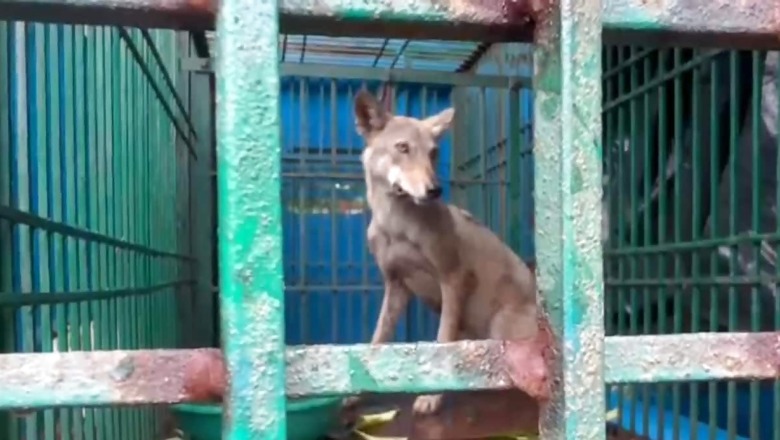
views
Human urine-soaked dolls, used by the UP forest department as bait to lure man-eating wolves in Mahsi tehsil of Uttar Pradesh’s Bahraich seem to have failed in the mission as the elusive predators remained at large. The UP government, however, has escalated ‘Operation Bhediya’, deploying over 300 foresters, sharpshooters, and a fleet of drones to catch the wolves — dead or alive.
Over 50,000 people of 25 villages in Bahraich’s Mahsi tehsil are enduring sleepless nights as man-eating wolves continue to terrorise the region, killing 10 people so far, including nine children. In an effort to lure the animals, the foresters had placed dolls soaked in human urine as bait but it failed to bring any positive results.
“We placed the dolls strategically near the riverbanks, close to the wolves’ resting places and dens,” said Ajit Pratap Singh, Divisional Forest Officer (DFO), Bahraich, who is part of ‘Operation Bhediya’.
“The dolls were soaked in children’s urine to simulate a natural human scent. Our strategy was to create a false sense of human presence near the traps and lure them away from residential areas towards traps or cages placed near their dens,” he explained.
As the wolves never approached the bait, some foresters criticised the move, calling it “futile”. “Wolves are highly intelligent animals with advanced cognitive abilities, particularly in social contexts,” said a senior forester. “Compared to dogs and humans, wolves are caring, playful, and devoted to their families. They educate their young, care for the injured, and live in tight-knit groups. In intelligence tests, wolves have even outperformed dogs, making it easy for them to sense a trap, even when dolls are soaked in human urine,” he added.
Experts also say shooing away the wolves won’t work as they strictly move within their territory. “Come what may, a wolf won’t leave its territory as it may face aggression from a different pack. So, shooing away the pack won’t help (locals),” said Dhananjay Mohan, senior IFS and head of the Uttarakhand Forest Department.
Bilal Habib, a scientist with Dehradun-based Wildlife Institute of India, added that the member of the dog family stays close to grasslands and agriculture fields to get food and water easily for new members of the pack.
“Wolves in United States or Canada stay in the wild since the forests are huge. Hence, fewer or no territorial issues arise with other carnivores. Indian Wolves move to the wild only for breeding. For the rest of the time, they choose grasslands in a bid to get easy prey and water,” Habib told News18.
WHY THE DELAY IN CATCHING WOLVES?
The constant shift in attacking sites is the main reason behind the delay in catching the wolves. On the night of August 21, a wolf attacked Barah Bigha village in Mahsi tehsil. It first attempted to lift a child but failed. Later, it attacked a woman, leaving her badly injured. A few hours later, the wolf successfully lifted a girl from another part of the village. Similar incidents were reported in Makka Purva, Nakwa, Kulela, Pura Hind Singh, and Basti Gadaria villages, where children became its prey. The wolf moved from one village to another, evading capture with every attack.
Locals have raised concerns about the ineffective combing hours in the ongoing campaign. “The wolves are being hunted mostly during the day, but they attack at night,” said a villager. Wolves are spotted daily, with residents capturing videos on their mobile phones and sending them to the forest department and police. “Many from our village have done the same,” he added. The villager said on August 3, a wolf was seen sitting in Asmanpur and two were spotted in Hindu Purva village during night.
The government has intensified the search operation, with UP Chief Minister Yogi Adityanath directing the foresters to shoot the wolves on sight. So far, the forest department has trapped four man-eater wolves in the last six months. However, the delay in catching all the wolves is adding to the anxiety and fear of the villagers who are forced to live under a constant threat. In many villages, mothers sleep with sticks while villagers spend nights guarding homes in groups in order to keep the killer wolves at bay.
(With inputs from Sunil Navprabhat)



















Comments
0 comment